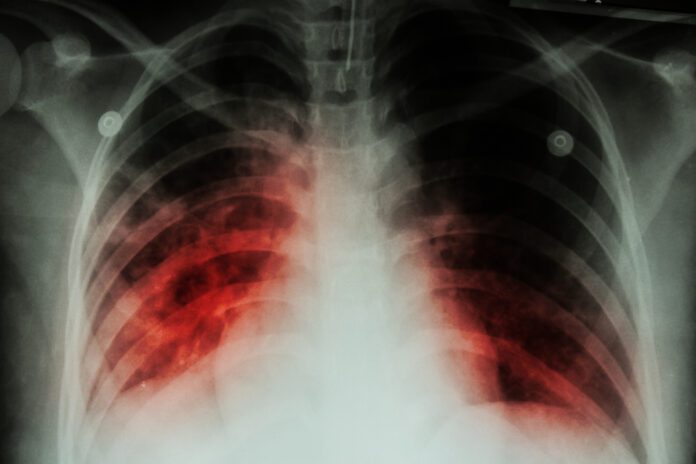Overview Of Pulmonary Tuberculosis
Pulmonary Tuberculosis (TB) is a contagious bacterial infection that involves the lungs. It may spread to other organs.
Commonly Associated With
TB; Mycobacterium – pulmonary
Causes Of Pulmonary Tuberculosis
Pulmonary TB is caused by the bacterium Mycobacterium tuberculosis (M tuberculosis). TB is contagious. This means the bacteria is easily spread from an infected person to someone else. You can get TB by breathing in air droplets from a cough or sneeze of an infected person. The resulting lung infection is called primary TB.
Most people recover from primary TB infection without further evidence of the disease. The infection may stay inactive (dormant) for years. In some people, it becomes active again (reactivates).
Most people who develop symptoms of a TB infection first became infected in the past. In some cases, the disease becomes active within weeks after the primary infection.
The following people are at higher risk of active TB or reactivation of TB:
- Older adults
- Infants
- People with weakened immune systems, for example due to HIV/AIDS, chemotherapy, diabetes, or medicines that weaken the immune system
Your risk of catching pulmonary tuberculosis increases if you:
- Are around people who have TB
- Live in crowded or unclean living conditions
- Have poor nutrition
The following factors can increase the rate of TB infection in a population:
- Increase in HIV infections
- Increase in number of homeless people (poor environment and nutrition)
- Presence of drug-resistant strains of TB
Symptoms Of Pulmonary Tuberculosis
The primary stage of TB does not cause symptoms. When symptoms of pulmonary TB occur, they can include:
- Breathing difficulty
- Chest pain
- Cough (usually with mucus)
- Coughing up blood
- Excessive sweating, particularly at night
- Fatigue
- Fever
- Weight loss
- Wheezing
Exams & Tests
The health care provider will perform a physical exam for pulmonary tuberculosis. This may show:
- Clubbing of the fingers or toes (in people with advanced disease)
- Swollen or tender lymph nodes in the neck or other areas
- Fluid around a lung (pleural effusion)
- Unusual breath sounds (crackles)
Tests that may be ordered include:
- Bronchoscopy (test that uses a scope to view the airways)
- Chest CT scan
- Chest x-ray
- Interferon-gamma release blood test, such as the QFT-Gold test to test for TB infection (active or infection in the past)
- Sputum examination and cultures
- Thoracentesis (procedure to remove fluid from the space between the lining of the outside of the lungs and the wall of the chest)
- Tuberculin skin test (also called a PPD test)
- Biopsy of the affected tissue (done rarely)
Treatment Of Pulmonary Tuberculosis
The goal of treatment is to cure the infection with medicines that fight the TB bacteria. Active pulmonary TB is treated with a combination of many medicines (usually 4 medicines). The person takes the medicines until lab tests show which medicines work best.
You may need to take many different pills at different times of the day for 6 months or longer. It is very important that you take the pills the way your provider instructed.
When people do not take their TB medicines like they are supposed to, the infection can become much more difficult to treat. The TB bacteria can become resistant to treatment. This means the medicines no longer work.
If a person is not taking all the medicines as directed, a provider may need to watch the person take the prescribed medicines. This approach is called directly observed therapy. In this case, medicines may be given 2 or 3 times a week.
You may need to stay at home or be admitted to a hospital for 2 to 4 weeks to avoid spreading the disease to others until you are no longer contagious.
Your provider is required by law to report your TB illness to the local health department. Your health care team will ensure that you receive the best care.



